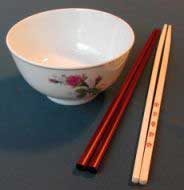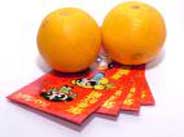


Our intention for a theme behind the wedding is sort of an "east meets west" idea. In other words, a mix of Chinese (Malaysian) and European (Canadian) culture.
The ceremony itself will be very similar to a European style with our own personal twists on it.
For the reception, it will be much more of a Chinese idea. Just think of a lot of food and really good company.
:: The Attire ::
We do not expect anyone to be in formal attire, whatsoever. We would like you to all be comfortable and enjoy yourself. Obviously, if you feel you should dress up, the most we would expect would be casual business attire.
:: The Meal ::
Our intent is to have somewhat of a traditional Chinese wedding meal. The food will be exotic and appetizing, and (again) there will be a lot of it.
A lot of things are based on numbers (in particular, luck numbers). This usually means that there will be (anywhere between) an eight or ten course meal (not including the wedding cake). For this reason, arrive hungry and you shall not be disappointed.
:: "Ang Pow" (the red packet) ::
With your invitations, you received a little red envelope (also known as a red packet). This ang pow is a part Chinese wedding ceremony tradition. Although we will be doing it a bit differently than the actual tradition, we wanted to give you a little background about it.
Traditionally, the newlyweds host a ceremony for the elders of their new family. It typically begins with the bride serving tea to her parents before the groom arrives.
After the actual wedding ceremony, the newlyweds serve tea (holding the teacups with both hands), inviting the groom's elders to drink tea by addressing them by formal title, e.g. first uncle or third aunt.
The general rule is to have the woman on the left side and the man on the right side. The people being served will sit in chairs, while the bride and groom kneel. For example, when the newlyweds serve tea to the groom's parents, the bride would kneel in front of her father-in-law, while the groom would kneels in front of his mother.
The newlyweds serve tea in order, starting with the groom's parents then proceeding from the oldest family members to the youngest, e.g. the groom's parents, then his paternal grandparents, then his maternal grandparents, then his oldest uncles and aunts, and all the way to his older brother.
In return, the newlyweds receive the lucky red envelopes stuffed with money or jewelry. The helpers, who are usually women blessed with a happy marriage or wealth and chosen by the fortune teller or bride's mother, also get lucky red envelopes stuffed with money from those being served. These envelopes are placed on the platter which holds the teacups.